
- Afrikaans
- Albanian
- Amharic
- Arabic
- Armenian
- Azerbaijani
- Basque
- Belarusian
- Bengali
- Bosnian
- Bulgarian
- Catalan
- Cebuano
- China
- China (Taiwan)
- Corsican
- Croatian
- Czech
- Danish
- Dutch
- English
- Esperanto
- Estonian
- Finnish
- French
- Frisian
- Galician
- Georgian
- German
- Greek
- Gujarati
- Haitian Creole
- hausa
- hawaiian
- Hebrew
- Hindi
- Miao
- Indonesian
- Italian
- Japanese
- Javanese
- Malay
- Persian
- Portuguese
- Punjabi
- Russian
- Spanish
- Swahili
- Telugu
- Vietnamese

High-Performance Honeycomb Waveguide Air Vents for AI Cooling
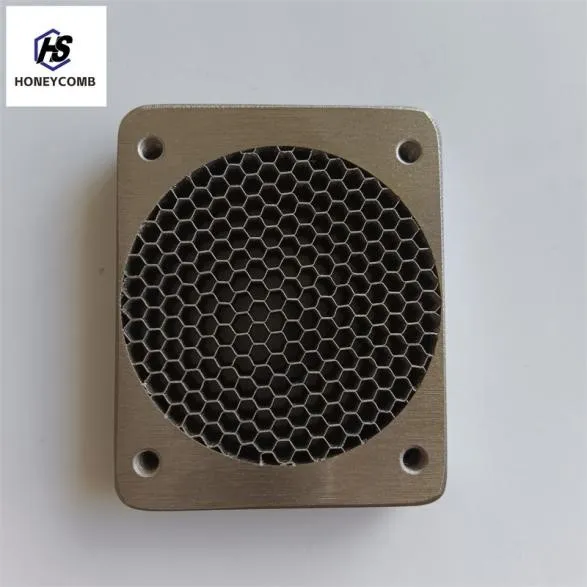
Industry Overview & Trend of Honeycomb Waveguide Air Vents
Honeycomb waveguide air vents—as well as their subtypes like EMI honeycomb and honeycomb air vent panels—are vital for next-gen electronics enclosures requiring both optimized airflow and high-level electromagnetic shielding. According to a 2023 Electronic Design market survey, the global EMI shielding market is expected to reach $7.2 billion by 2028, with over 23% CAGR specifically in waveguide vent solutions for 5G, aerospace, and industrial automation.
- Recent Trend: Multi-layered honeycomb vents are favored for their enhanced broadband attenuation in ISO/IEC 61000-4-6 environments.
- Key Drivers: Miniaturization, higher data rates, and environmental compliance (RoHS, REACH).
- Top Growth Regions: North America, East Asia, and Western Europe.
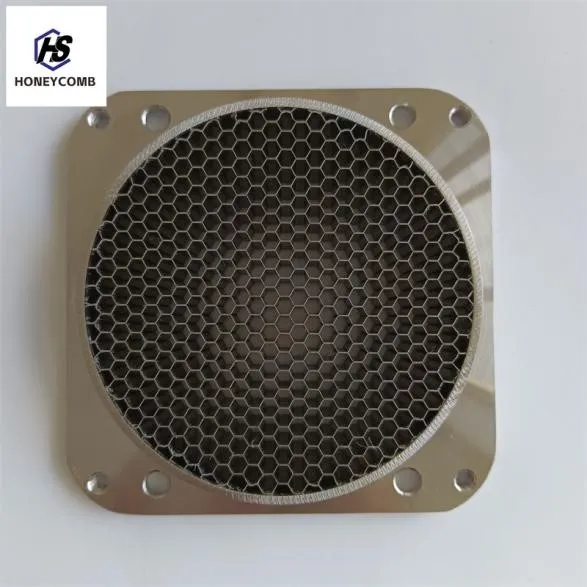
| Parameter | Typical Range | Industry Standard/Test | Reference Product |
|---|---|---|---|
| Honeycomb Cell Size | 3.2–6.35 mm | IEC 61000-5-7 | Honeycomb Waveguide Window/Panel |
| Panel Thickness | 6–51 mm | ANSI C63.5 | Honeycomb Waveguide Panel |
| Material | • Aluminum (5052/6061) • Stainless Steel 304/316 • Brass/Copper |
ISO 9001, ASTM B209 | Honeycomb EMI Vents |
| EMI Attenuation | ≥ 60–120 dB @1-10 GHz | IEC 60068-2-6, MIL-STD-285 | EMI Honeycomb Air Vent |
| Airflow (Free Area) | ≥ 90% | ISO 5167 | Honeycomb Air Vent |
| Corrosion Resistance | Salt spray ≥ 500h | ASTM B117 | Honeycomb Waveguide Panel |

Technical Principle & Manufacturing Process of Honeycomb Waveguide Air Vents
What Makes Honeycomb Waveguide Air Vents So Effective?
The core principle is utilizing a high-precision metallic honeycomb—whose depth and cell geometry act as a waveguide below cutoff—for maximum EMI attenuation, while the honeycomb passage enables high airflow for cooling or pressurization.
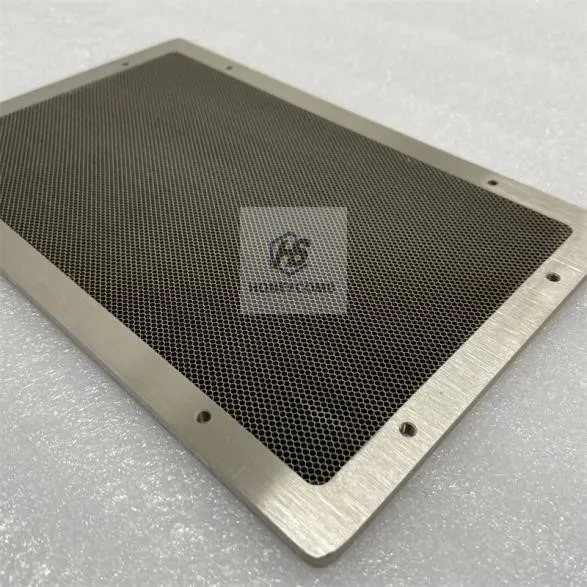
Detailed Manufacturing Flow
1. Material Selection
Choose aluminum (5052/6061), stainless steel, or brass per EMI & corrosion requirements2. Honeycomb Core Fabrication
Layers formed and expanded, precision-cut (CNC/laser); cell size & depth adjusted3. Frame Machining
CNC milled / die-cast to tolerance; anodized or plated for finish4. Assembly & Bonding
Honeycomb core inserted into frame, high-grade adhesive or spot-welded as per ISO 90015. Surface Finishing
Anodizing, chromate, or chemical conversion for enhanced life & corrosion protection6. Testing & Inspection
EMI, airflow & salt-spray (ASTM B117, IEC 60068); delivered with test report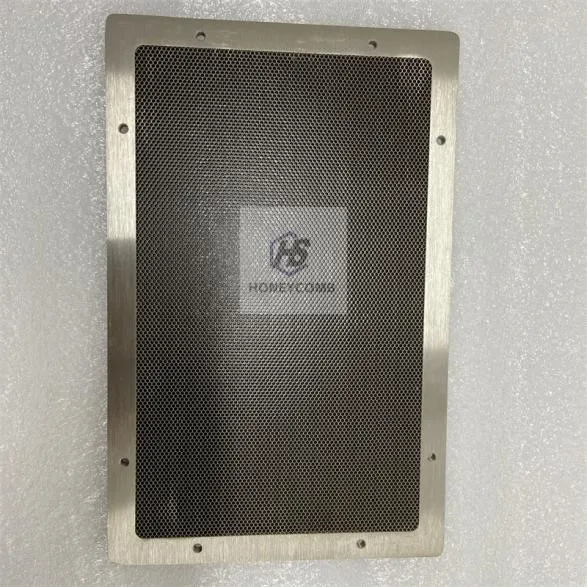
Honeycomb Waveguide Window/Panel—Key Technical Indices & Performance Visualization
The Honeycomb Waveguide Window/Panel by HSHI is engineered for high EMI attenuation, superb airflow, and robust corrosion resistance—meeting or surpassing ISO, ANSI, and MIL standards.
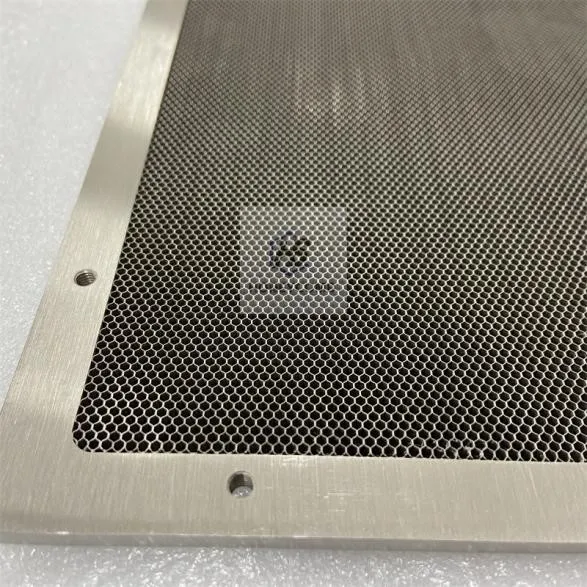
Technical Advantages & Compliance Certifications
- Ultra-High EMI Attenuation: 60–120 dB attenuation per IEC 61000-4-3, far exceeding sheet-metal and mesh venting.
- Maximum Airflow: Free area ≥90% preserving cooling and air exchange compared to solid shielding*
- Excellent Corrosion Resistance: Salt spray ≥500h; all honeycomb waveguide air vents available with anodized, passivated, or chromate surface to ISO 9227 / ASTM B117
- Custom Fabrication: Wide range in cell depth, size, frame geometry, and gasket integration possible—tailored for OEM electronics, HVAC, military
- Certified Quality: ISO 9001:2015, RoHS, REACH, ANSI/AHAM, IEC 60068, plus customer-specific testing
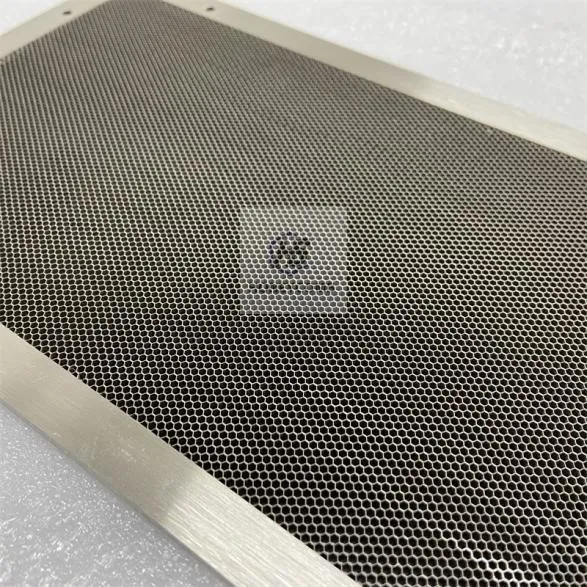
Top Manufacturers of Honeycomb Waveguide Air Vents: Comparative Overview
| Manufacturer | Main Market | Material Choices | Compliance Certifications | Customization Level |
|---|---|---|---|---|
 HSHI HSHI |
Global (OEM/Defense/Telecom) | Al, SS, Brass, CU | ISO 9001, RoHS, REACH | Full: cell, frame, surface, size |
| Leader Tech | North America | Al, SS | ISO 9001, MIL-STD-285 | Medium: grid, frame |
| Holland Shielding | Europe/Global | Al, Brass, SS | ISO 9001, RoHS, MIL | Medium |
| Parker Chomerics | Global (Aerospace) | Al, Cu | ISO, REACH, RoHS | High: seals, mounting |
Custom Honeycomb Waveguide Air Vent Solutions
HSHI offers true end-to-end customization for honeycomb waveguide window/panels:
- Cell Size/Depth: From 3.2mm (fine) to 6.35mm (high flow); panel depth up to 51mm for extreme EMI
- Material & Coating: Anodized/Alodine/Chromate as per corrosion or appearance needs
- Frame Geometry: Press-fit, baffle/knife, square, or flanged edge with or without EMI gasket
- CNC Precision: All panels and frames produced to sub-0.1mm flatness or per customer/military drwgs
- Mounting Type: Pre-drilled holes, captive fasteners, custom brackets
- EMI Gasket Integration: Monolithic or insertable EMI gasket for up to 130 dB shield
Typical Application Cases of Honeycomb Waveguide Air Vents
- Integrated 4.8mm honeycomb, 93% free area, chromate anodized; EMI shield tested ≥108dB @5GHz
- Operational in saline coastal regions (≥530h salt spray passed)
- Fully compliant with IEC 61000-4-3 & ASTM B117
- Custom E-type frame, aluminum 6061, 6.35mm thick core
- MIL-STD-285/ECE R10-certified EMI attenuation >100dB, mechanical shock tested
- Integrated knife-edge EMC gasket for full enclosure sealing
- Stainless steel honeycomb air vent, passivated, ≥500h salt spray
- 60dB+ EMI shield, tested to IEC 60068 environmental cycling
- Enabled significant energy savings on climate systems by allowing large area free flow while maintaining EMI integrity
Product Specifications: Honeycomb Waveguide Window/Panel
| Model | Cell Size | Panel Thickness | Material | EMI (dB)@3GHz | Surface Finish | Typical Use |
|---|---|---|---|---|---|---|
| HSHI-43A | 4.3mm | 10mm | 5052 AL | 100 | Anodized | Server racks, telecom |
| HSHI-36SS | 3.6mm | 12mm | SS304 | 110 | Passivated | Petrochemical, cleanroom |
| HSHI-63B | 6.3mm | 25mm | Brass | 112 | Chromate | Military, radar |
| HSHI-55CUG | 5.5mm | 16mm | Copper | 114 | Nickel plate | RF testing |
Honeycomb Waveguide Air Vents—Professional FAQ
Delivery Time, Warranty & Customer Support
- Standard panel production: 10–15 working days; custom projects: 3–4 weeks
- 24 months warranty covering material & process defects (excluding abnormal corrosion or mechanical damage)
- Technical consultation, CAD design assistance, and full logistics tracking provided for all international orders
- All shipments include ISO/MIL-compliant test reports and traceable lot/batch record
Quotation Guidelines for Honeycomb Waveguide Air Vents
- For RFQ, specify: cell size, panel (core) thickness, overall dimension, frame profile, surface finish, and quantity
- Optional: Application environment (indoor/outdoor/extreme), target EMI level, mounting type, gasket requirement
- 3D CAD, DXF, or sample part photos can greatly expedite custom solution quotation
- Large project, strategic OEM and ongoing partnership pricing available
Authoritative Resources & Further Reading
- Electronic Design: Market Trends for EMI Shielding Materials (2023)
- EMC Standards: Waveguide Below Cutoff for Shielding Vents [Forum]
- StackExchange: Technical Discussion of Honeycomb EMI Shielding
- IEEE Xplore: Design and Characterization of Honeycomb EMC Vents (Open Access)
With their modular customization and globally proven compliance, they enable reliable, energy-efficient, and safe operation for the next generation of electronic and electrical infrastructure.
Products categories
-
Why Vented Aluminum Honeycomb Is Leading the Way in Shielding and Ventilation SolutionsNewsJul.18,2025
-
Why Stainless Steel Honeycomb Panel is the Ultimate Choice for High-Tech Shielding and ProtectionNewsJul.18,2025
-
Why Honeycomb Strips Are Revolutionizing High-Speed Sealing SolutionsNewsJul.18,2025
-
Shielded Glass Innovation Powers the Future of Electromagnetic ProtectionNewsJul.18,2025
-
Precision Starts Here: Revolutionizing Airflow Control with Honeycomb Wind Tunnel SolutionsNewsJul.18,2025
-
Elevate Industrial Performance with Precision-Engineered Steel Honeycomb Core SolutionsNewsJul.18,2025
-
Vented Aluminum Honeycomb: A Smart Shield for Airflow and EMI ControlNewsJul.11,2025















